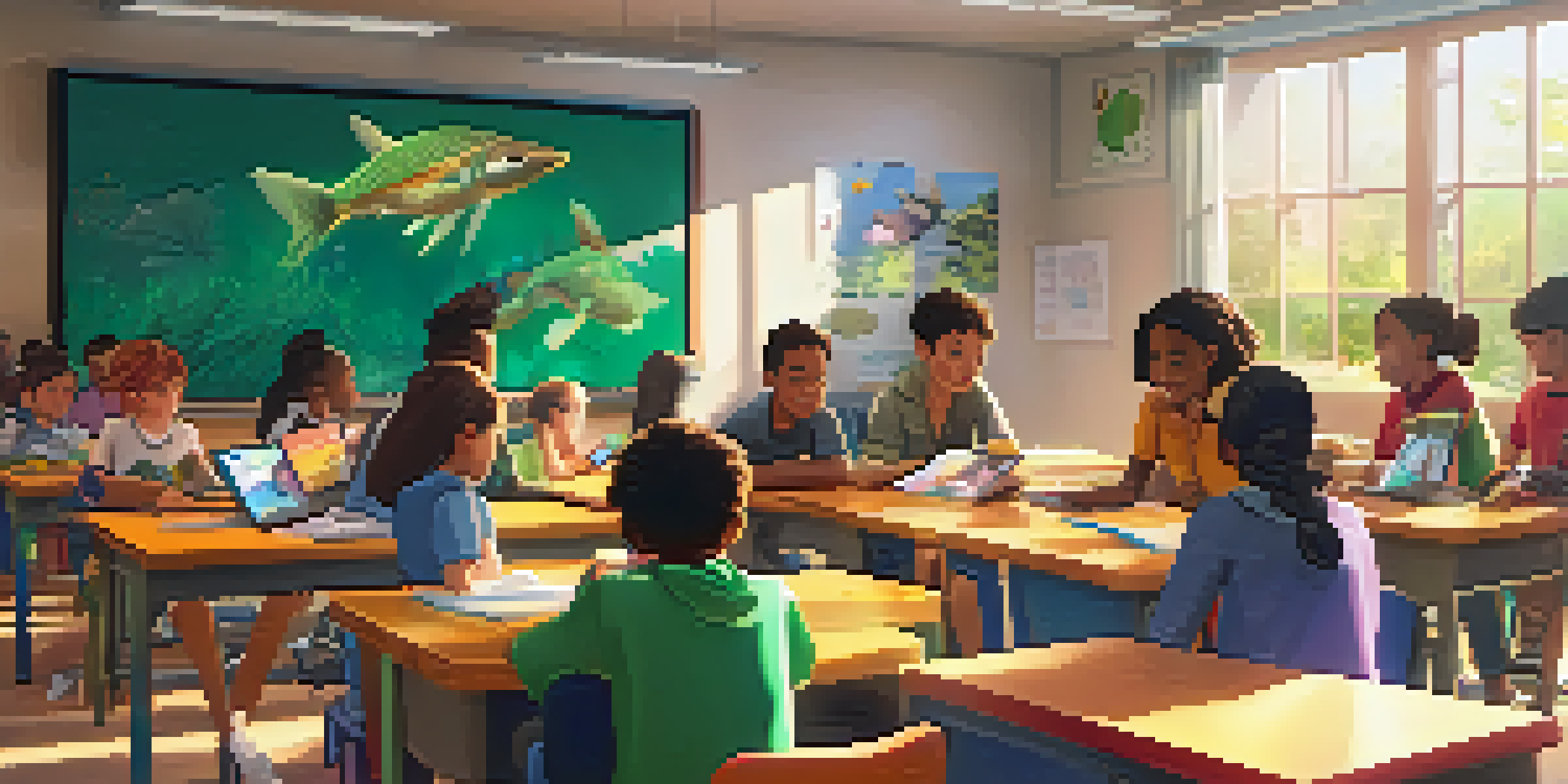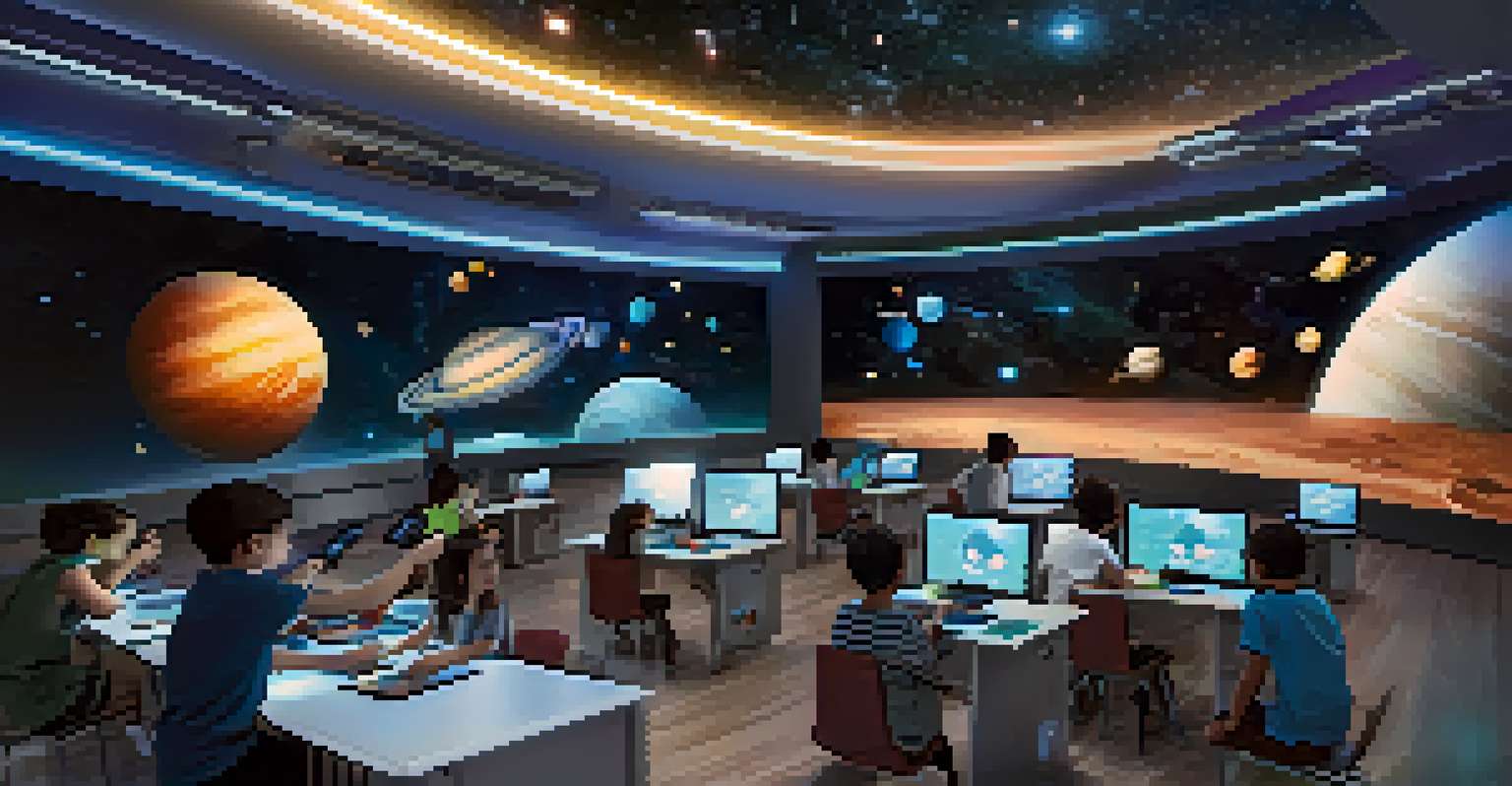The Role of Animation in Teaching Complex Concepts Effectively

Understanding Animation's Power in Education
Animation serves as a powerful tool in education, transforming how we convey complex ideas. By adding visual elements, it captivates learners, making concepts more relatable and engaging. This method enhances retention, as students are more likely to remember information presented in an animated format.
Animation is not only a way to entertain; it’s a way to educate and inspire students to think critically and creatively.
For instance, think about how a scientific process like photosynthesis can be challenging to grasp through text alone. An animated video can visually break down the stages, showing how sunlight, water, and carbon dioxide interact. This not only simplifies the concept but also makes it memorable through vivid imagery.
Moreover, animation caters to various learning styles, allowing visual learners to thrive. By integrating dynamic visuals, educators can reach a broader audience, ensuring that no student is left behind in understanding complex subjects.
Breaking Down Complex Ideas with Visual Storytelling
Visual storytelling is a key strength of animation, as it presents complex ideas in a narrative format. By weaving a story around a concept, learners can connect emotionally and intellectually, enhancing their comprehension. This narrative approach makes abstract ideas feel more concrete and relatable.

For example, a lesson on the water cycle can be transformed into an animated journey of a water droplet. This perspective allows students to witness evaporation, condensation, and precipitation in action, making the entire cycle easier to understand and remember.
Animation Enhances Learning Retention
Using animation in education helps students grasp complex ideas more effectively and improves information retention.
Additionally, storytelling through animation encourages curiosity and engagement. When students are invested in a story, they are more likely to explore the underlying concepts, fostering a deeper understanding that goes beyond rote memorization.
Engaging Multiple Senses to Enhance Learning
Animation engages multiple senses, which is crucial for effective learning. By combining visual elements with sound and motion, it creates a multisensory experience that can improve information retention. This heightened engagement helps solidify complex concepts in a student’s memory.
The greatest innovations in education will come from harnessing the power of technology to engage students in new and exciting ways.
Consider an animated lesson on human anatomy. The combination of visuals, labels, and narration can help students visualize the human body and its functions more effectively than static images in a textbook. This sensory engagement allows learners to grasp difficult concepts more intuitively.
Moreover, engaging multiple senses fosters a more immersive learning environment. When students actively participate in the learning process, they are more likely to develop a genuine interest in the subject matter, leading to better academic outcomes.
Creating a Safe Space for Mistakes and Exploration
Animation allows students to explore complex concepts in a safe space where mistakes are part of the learning process. Animated scenarios can illustrate the consequences of various decisions, giving learners the freedom to experiment without real-world repercussions. This encourages a growth mindset, where mistakes are seen as learning opportunities.
For instance, an animated simulation of a physics experiment can show the effects of different variables. Students can see what happens when they alter conditions, helping them understand the principles behind the experiments without the fear of failure.
Visual Storytelling Boosts Engagement
Animation transforms abstract concepts into relatable narratives, increasing student engagement and curiosity.
This safe exploration fosters confidence in students, empowering them to tackle challenging subjects. When they feel secure in their learning environment, students are more likely to ask questions and seek clarification, leading to a deeper understanding of complex concepts.
Enhancing Collaboration Through Animated Projects
Animation encourages collaboration among students, as they often work together on animated projects. This teamwork fosters communication and critical thinking skills, essential for grasping complex concepts. By sharing ideas and perspectives, students can develop a more comprehensive understanding of the subject matter.
For example, creating a group animation about environmental issues allows students to research, discuss, and present their findings collaboratively. This not only strengthens their grasp of the topic but also promotes skills like teamwork and problem-solving.
Furthermore, collaborating on animation projects can spark creativity, leading to innovative ways of presenting complex ideas. When students combine their strengths, they create unique and engaging content that resonates with their peers, making learning a shared experience.
The Role of Feedback in Animated Learning Environments
Feedback is a crucial component in any learning environment, and animation offers unique ways to provide it effectively. Instant feedback can be integrated into animated lessons, allowing students to understand their mistakes in real-time. This immediate response helps reinforce learning and encourages continuous improvement.
For instance, in an animated math tutorial, students can see visual representations of their answers and receive guidance on corrections. This interactive approach ensures that learners grasp the concepts thoroughly before moving forward.
Collaboration Sparks Creativity
Animated projects encourage teamwork among students, fostering communication and innovative ways to present complex ideas.
Moreover, feedback in animated formats can be more engaging than traditional methods. It transforms the often daunting process of correction into an enjoyable experience, motivating students to take ownership of their learning journey.
The Future of Animation in Educational Practices
As technology continues to advance, the role of animation in education is set to grow even further. Emerging tools and platforms make it easier for educators to create and implement animated content tailored to their lessons. This evolution opens up new possibilities for teaching complex concepts in innovative ways.
For instance, virtual reality (VR) and augmented reality (AR) are beginning to integrate animation, providing immersive learning experiences. Imagine students exploring the solar system through an animated VR experience, making the vastness of space more tangible and easier to comprehend.

Looking ahead, the future of animation in education promises to be bright. By harnessing new technologies, educators can continually adapt their teaching methods, ensuring that complex concepts are accessible and engaging for all learners.